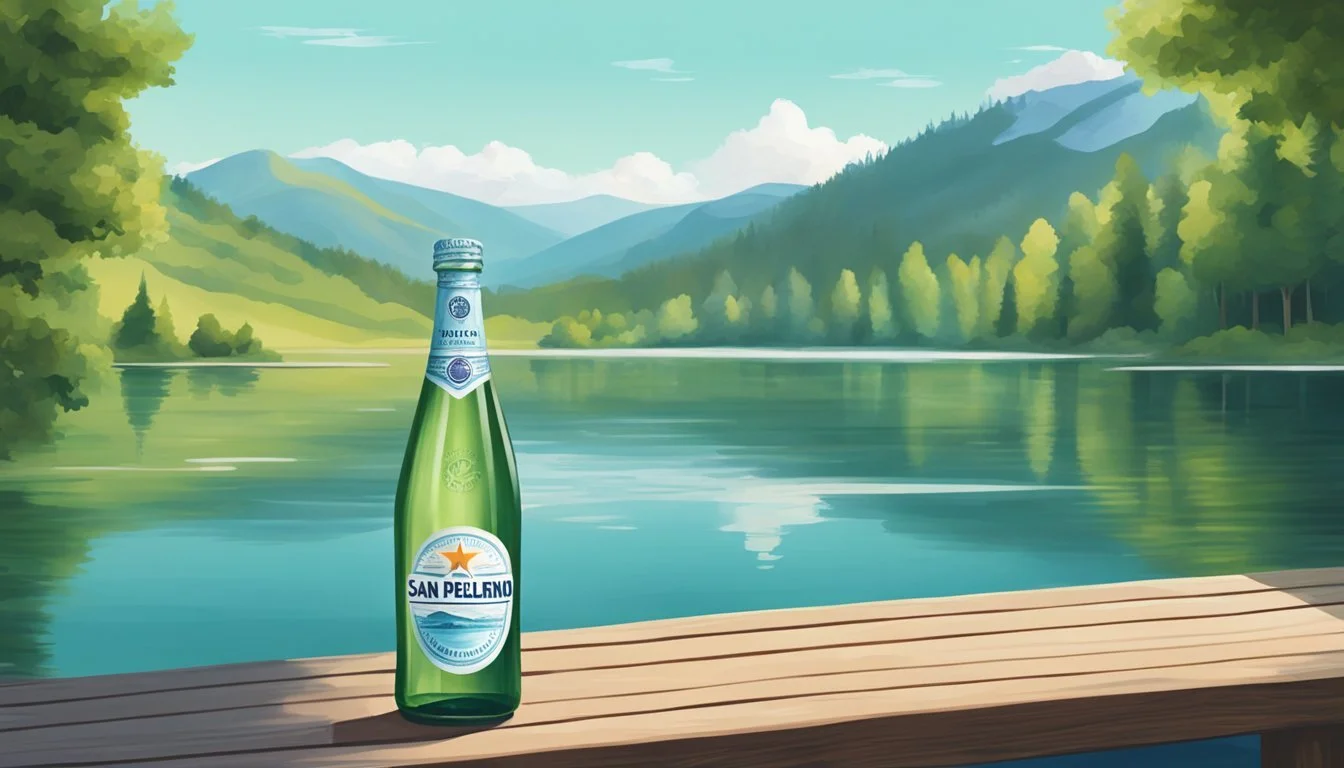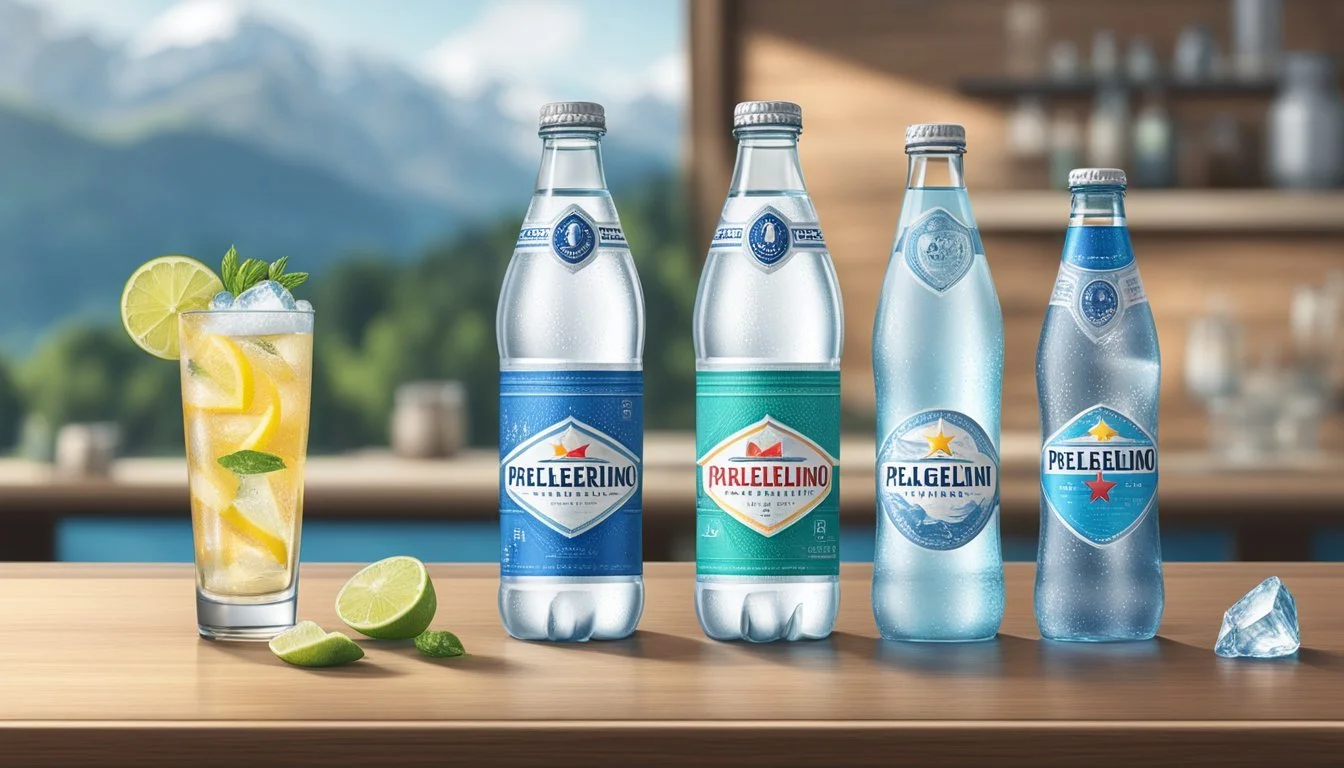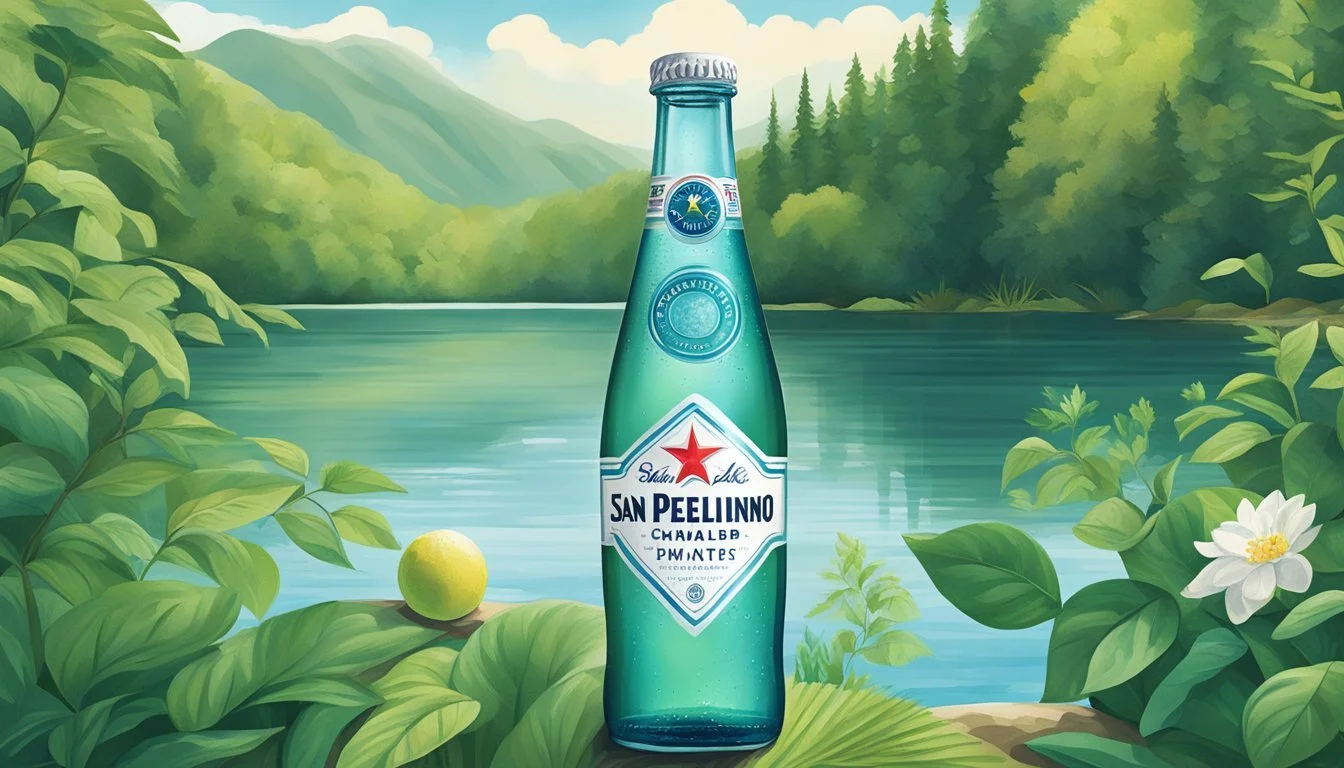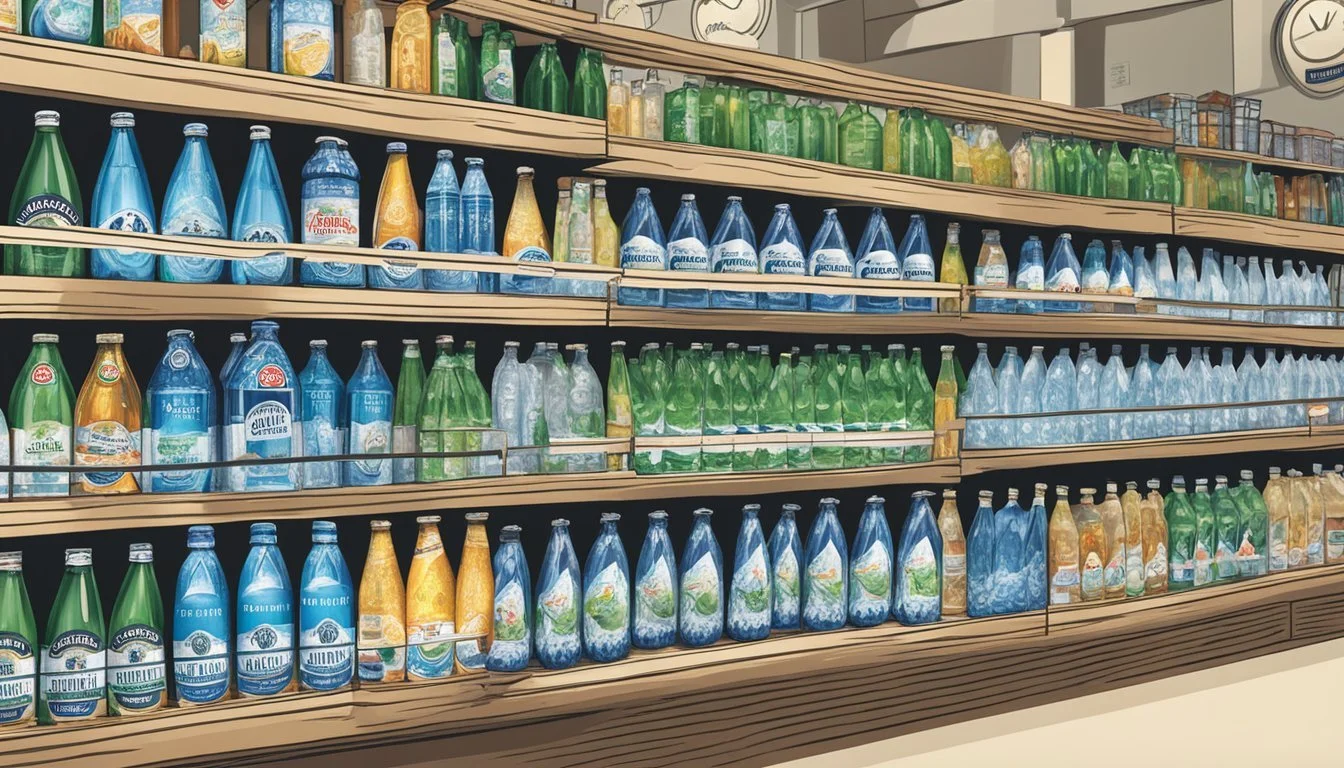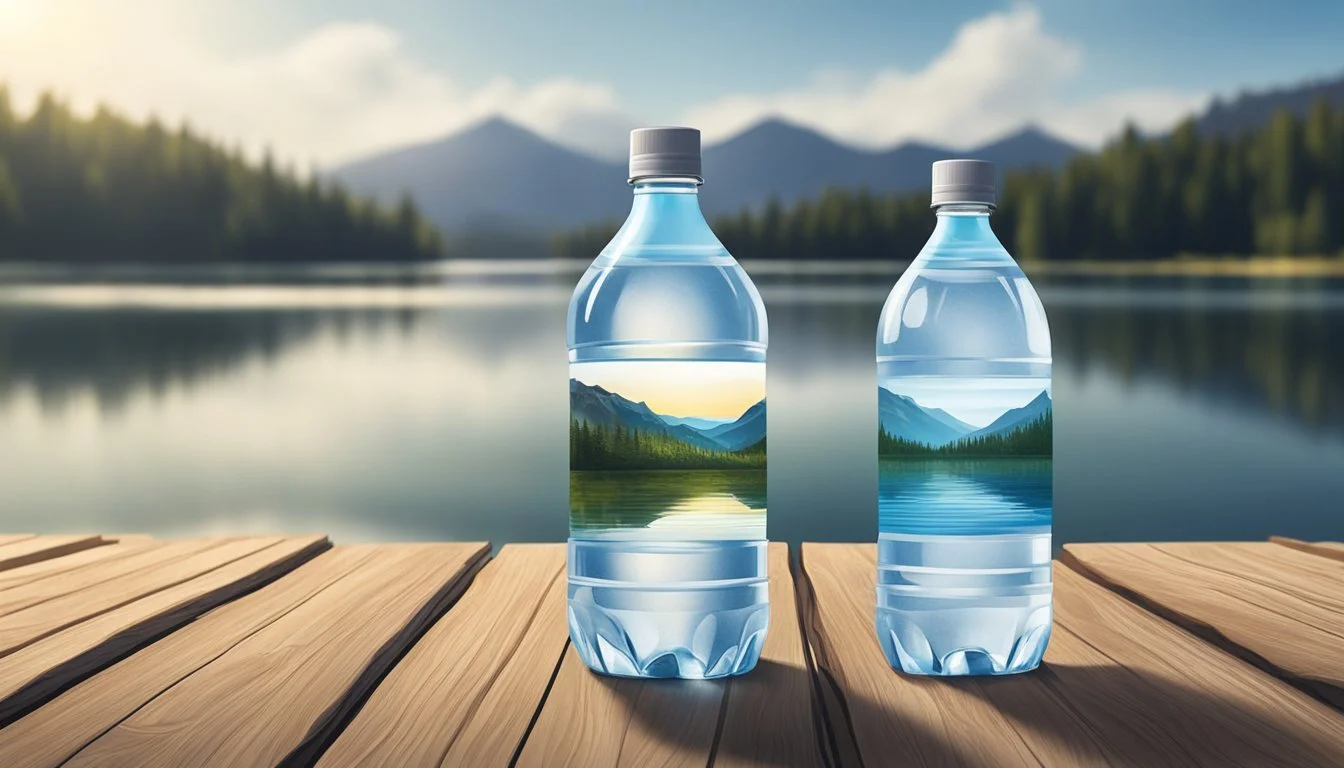San Pellegrino vs. Crystal Lake
Evaluating the Superior Bottled Water
When it comes to choosing the right bottled water, many consumers find themselves torn between different brands. Among the popular choices are San Pellegrino and Crystal Lake, each offering unique benefits and tastes. San Pellegrino boasts a rich heritage of producing fine tasting mineral water since 1899, with a reputation for high mineral content and a crisp, refreshing flavor. This makes it a preferred option for those who enjoy a more sophisticated drinking experience.
On the other hand, Crystal Lake, though not as historically renowned, has positioned itself as a reliable, pure water source. It's known for its clean taste and minimal additives, appealing to individuals seeking straightforward hydration without the frills.
In comparing San Pellegrino and Crystal Lake, one must consider personal preference in taste and the added benefits of mineral content versus simplicity in composition. Both brands have their merits, making them worthy contenders in the bottled water market.
Understanding the Basics of Bottled Water
Bottled water comes in various types, each with specific characteristics. Knowing these differences can help you make an informed choice regarding health and hydration.
Types of Bottled Water
Bottled water is broadly categorized as spring, mineral, purified, and sparkling water.
Spring water originates from an underground formation and is collected at the spring or through a borehole.
Mineral water must contain a certain level of dissolved minerals, sourced directly from a geologically and physically protected underground water source.
Purified water goes through processes like distillation, deionization, or reverse osmosis to remove impurities.
Sparkling water is either naturally carbonated or has carbon dioxide added to it, providing the characteristic bubbles.
Defining the Terminology
Understanding key terms in bottled water is crucial.
Total Dissolved Solids (TDS) refers to the concentration of minerals, salts, and metals dissolved in the water.
The pH level indicates the acidity or alkalinity.
Microbiologically safe means the water is free from harmful bacteria and viruses.
BPA-free bottles ensure that no Bisphenol A, a chemical used in some plastics, is present.
Natural mineral water should be distinguished from table water, which can be from any source and treated or mixed to achieve desired properties.
Health and Hydration Considerations
Choosing the right bottled water involves more than just taste.
Mineral content is essential for health. Magnesium and calcium are beneficial for muscle function and bone health.
However, sodium levels should be monitored, especially for individuals with hypertension.
Sparkling water can aid digestion but may not be suitable for people with acid reflux.
Hydration is vital, and choosing a type of bottled water that you enjoy can encourage you to drink more throughout the day. Purified water is a good option if you are concerned about contaminants.
Each type of bottled water offers unique benefits, so understanding these factors can help you make the best choice for your personal health needs.
The Origin of the Waters
San Pellegrino and Crystal Lake boast remarkable origins, deeply connected to their natural sources which significantly influence their distinct characteristics. Here's a look at the unique beginnings of each water.
San Pellegrino's Italian Alps Source
San Pellegrino water originates from a source at the foothills of the Italian Alps in the town of San Pellegrino Terme. The water's journey starts as rain and snow, which then takes about 30 years to filter through the mountains' limestone and volcanic rocks.
During this time, it absorbs minerals such as calcium, magnesium, and bicarbonate, giving it a unique mineral content.
The region of Lombardy, known for its pristine environment, plays a crucial role in maintaining the quality of this water. Since 1899, San Pellegrino has been famous for its sparkling water with fine bubbles and a balanced minerality, making it a preferred choice in fine dining settings.
Crystal Lake's Natural Spring
Crystal Lake water is sourced from a pure natural spring located in a remote area. Unlike San Pellegrino which is carbonated, Crystal Lake offers still water that has been naturally filtered through layers of sandstone and gravel.
This natural filtration process enriches the water with essential minerals while maintaining its clear, crisp taste.
The spring is situated in a region known for its untouched landscapes, which helps ensure the water remains free from pollutants. Crystal Lake takes pride in bottling this natural spring water directly at the source, preserving its purity and freshness that consumers have come to trust.
Chemical Composition and Mineral Content
San Pellegrino and Crystal Lake differ significantly in their chemical composition and mineral content. Understanding these differences can help consumers make informed choices based on their health needs and taste preferences.
Examining Mineral Levels
San Pellegrino is renowned for its rich mineral content. It contains substantial levels of calcium, magnesium, and potassium. For instance, San Pellegrino features approximately 208 mg/L of calcium and 49 mg/L of magnesium. These minerals contribute not only to the taste but also to potential health benefits like supporting bone and muscle health.
Crystal Lake, on the other hand, tends to have a lower mineral content. While it still offers essential minerals, the concentrations are generally less pronounced compared to San Pellegrino. This can make Crystal Lake a preference for those who favor a lighter mineral profile in their water without the pronounced taste of higher mineral content.
pH Levels and Alkalinity
The pH level of water indicates its acidity or alkalinity. San Pellegrino usually has a pH level around 7.7, making it slightly alkaline. This higher pH level can be beneficial for individuals who aim to balance their body's acidity levels. The presence of natural carbon dioxide also influences its pH, contributing to its refreshing, effervescent nature.
Crystal Lake generally has a more neutral pH, often close to 7, indicating a balanced acidity and alkalinity. This makes it a versatile option for those who prefer a neutral taste profile without the effects or benefits associated with higher alkalinity. Additionally, the lack of carbon dioxide in Crystal Lake means it maintains a still and clean taste.
Production and Carbonation Processes
This section examines the production and carbonation techniques used by San Pellegrino and Crystal Lake, focusing on carbonation, CO2 management, and the sources of water.
San Pellegrino's Carbonation
San Pellegrino hails from a protected underground water source in the Italian Alps. The natural spring water is initially collected with minimal interference.
Due to volcanic activity in the area, the water naturally contains minerals like sodium and chloride.
Although the water is naturally carbonated, the carbonation is not stable enough. They extract the original CO2 and reintroduce it after purification. This controlled process ensures a consistent and refreshing effervescence.
The final product presents fine, lingering bubbles that enhance the drinking experience.
The Methods of Crystal Lake
Crystal Lake utilizes a different approach, starting with local, protected water sources. These sources provide a pure base free from contaminants.
Instead of naturally occurring carbonation, they introduce CO2 during the bottling process. The amount of CO2 is carefully regulated to achieve the desired level of fizz.
Crystal Lake's method focuses on maintaining the integrity of the original water while adding a crisp, refreshing effervescence.
This method results in a clean taste with consistent bubble quality, catering to those who prefer a straightforward, sparkling water experience.
Comparing Taste Profiles
Taste profiles of San Pellegrino and Crystal Lake reveal distinct flavor nuances and consumer preferences, offering unique experiences for different palates.
Flavor Nuances
San Pellegrino is renowned for its slightly salty and mineral-rich taste, attributed to its source in the Italian Alps. It delivers a crisp, effervescent experience with strong carbonation, enhancing the refreshment factor.
Unflavored Options: San Pellegrino has a robust mineral presence, particularly noted for its sodium and bicarbonate content.
Flavored Varieties: The brand offers flavored water with hints of lemon, clementine, and peach, maintaining natural fruit extracts without sweeteners.
In contrast, Crystal Lake water offers a pure and neutral taste, sourced from freshwater springs. It lacks significant mineral content, leading to a cleaner and softer mouthfeel.
Unflavored Options: It provides a light, almost delicate profile, devoid of the saltiness found in mineral waters.
Flavored Varieties: The brand emphasizes subtle flavors, using all-natural ingredients to add just a touch of fruit essence.
Consumer Preferences
Consumer preferences for San Pellegrino and Crystal Lake often depend on taste tests and individual tastes. San Pellegrino appeals to those who appreciate a distinct, bold flavor with a strong fizz, which sommeliers often prefer for its complexity.
Sparkling Water Lovers: They might prefer San Pellegrino for its high carbonation and rich, mineral aftertaste.
Flavored Varieties: Ideal for those who enjoy a natural fruit twist without added sweetness.
Crystal Lake's mild, smooth profile attracts consumers seeking simplicity in their water. It is particularly favored by individuals who prefer a less intrusive water taste.
Everyday Hydration: Preferred by those who want a more neutral palate cleansing experience.
Flavored Varieties: Suitable for consumers desiring a gentle fruit hint without overpowering the natural water taste.
Health Effects and Benefits
San Pellegrino and Crystal Lake water both provide unique health benefits, especially when it comes to hydration and the mineral content that supports overall well-being.
Hydration and Digestion
Hydration is critical for maintaining bodily functions, and both San Pellegrino and Crystal Lake excel in this area. San Pellegrino, being a sparkling mineral water, can enhance hydration by making drinking water more enjoyable. This carbonation also contributes to a feeling of fullness, which may help with weight management.
Crystal Lake, a still mineral water, offers a pure and refreshing option for staying hydrated. The lack of carbonation makes it a good choice for individuals who prefer non-carbonated beverages, ensuring they drink adequate water throughout the day.
Drinking water, whether sparkling or still, aids in digestion by breaking down food and enabling the absorption of nutrients. Sparkling water like San Pellegrino can particularly help with digestion as the bubbles may stimulate digestive enzymes and ease indigestion.
Minerals and Health
San Pellegrino is packed with essential minerals such as calcium, magnesium, and bicarbonates. These minerals support various bodily functions. For example, calcium is crucial for bone health, while magnesium plays a role in muscle function and neurological health.
Crystal Lake water also contains important minerals, although the specific content can vary. Both waters typically include trace amounts of electrolytes which are vital for maintaining energy levels and supporting bodily functions.
The presence of minerals in both waters can enhance overall health. Calcium and magnesium in San Pellegrino can improve bone density and metabolic function, while the mineral content in Crystal Lake supports hydration and electrolyte balance. This makes both options beneficial for regular consumption.
Packaging and Environmental Implications
San Pellegrino and Crystal Lake take different approaches to packaging their bottled water, both in terms of materials used and the environmental impact.
Plastic vs. Glass Bottles
San Pellegrino is well-known for its use of glass bottles, especially in fine dining settings. Glass is often perceived as a premium packaging option due to its purity and recyclability.
Crystal Lake, on the other hand, primarily uses plastic bottles, which are lightweight and convenient for consumers. Plastic bottles, while practical, have raised concerns about microparticle contamination as noted in several studies.
These differences in packaging choices significantly affect the perception of quality and the environmental footprint of each brand. Glass bottles are typically recycled more efficiently than plastic, which often contributes to landfill waste.
Sustainability and Regulations
In terms of sustainability, San Pellegrino's glass bottles can be reused and recycled, reducing the overall environmental impact. They also follow strict regulations set by global standards and the Food and Drug Administration (FDA).
Crystal Lake has had to address the issues related to the environmental impact of plastic packaging. New regulations and sustainable practices are pushing these companies to improve their packaging methods.
Both brands are working towards more sustainable practices, but the type of material used in their packaging plays a crucial role in their environmental strategies. Recyclability, carbon footprint, and adherence to regulations are key factors for both San Pellegrino and Crystal Lake.
The Market: Brands and Price Points
San Pellegrino and Crystal Lake are key competitors in the beverage industry, each with unique attributes and price points that set them apart. In this analysis, their market positions and costs compared to other leading brands are examined.
Competitive Brands in the Industry
San Pellegrino leads the global sparkling water market, with $981.13 million in sales and a 4.9% market share. This brand is considered premium due to its rich mineral content and elegant packaging.
Crystal Lake, while not among the top-selling brands, maintains a loyal customer base through its focus on purity and natural taste.
Other significant competitors include Perrier, which is another premium brand known for its crisp taste and strong carbonation. La Croix appeals to a younger demographic with various flavors and modern branding. Topo Chico, owned by Coca-Cola, offers a unique mineral taste.
Nestlé and Pepsi also participate in the sparkling water sector, with multiple brands targeting different market segments. Companies like these influence consumer preferences through extensive distribution networks and aggressive marketing campaigns.
Cost Analysis
The price of bottled water varies significantly across brands. San Pellegrino is typically priced at a premium, reflecting its quality and heritage. On average, consumers can expect to pay around $22 for a 24-pack of 500ml bottles.
Crystal Lake's price range tends to be more moderate, making it accessible to a broader audience without compromising on perceived quality. A 24-pack might cost around $15-$18.
In comparison, Perrier and Topo Chico also fall into the higher price bracket, with similar pricing to San Pellegrino. La Croix is more affordable, often found at $5-$6 per 12-pack, making it suitable for budget-conscious consumers.
Companies like Nestlé and Pepsi often have diverse product lines that range from budget to premium, thus catering to various segments of the market. This range allows them to penetrate different consumer bases and maximize market share.
Understanding these price points helps consumers make informed choices based on their preferences and budget.
Consumer Insights and Preferences
Both San Pellegrino and Crystal Lake have garnered dedicated consumer bases, influenced by factors such as popularity in different regions and the rise of zero-calorie trends.
Spanning the Globe: Popularity and Preferences
San Pellegrino, renowned for its sparkling quality, enjoys significant popularity in fine dining. Originating from San Pellegrino Terme in Val Brembana, it is often preferred in both restaurants and at home in European countries and the U.S. Food and Wine magazine frequently highlights its presence at gourmet eateries.
Crystal Lake water, accessible through Whole Foods and other health-conscious retailers, tends to attract consumers focusing on purity and natural taste. This brand has a strong following in regions prioritizing locally-sourced and eco-friendly products. The consumer base for Crystal Lake includes those who seek a neutral, refreshing experience without any added carbonation.
Zero-Calorie Trends
San Pellegrino's promotion of sparkling water fits well with current zero-calorie and zero-sugar trends. With no added sugars, it satisfies a growing demand among those looking for dietary-friendly options. The popularity of zero carbs beverages has amplified San Pellegrino's appeal, especially among health-minded individuals.
Crystal Lake, boasting zero calories, similarly benefits from these trends. It's a favorite among those adhering to whole foods lifestyles where natural, unflavored water is preferred. This counts as a key point in driving its consumer preference, evident in outlets such as Food52, which emphasize clean, unadulterated products.
Their ability to meet modern dietary needs while offering distinct flavors and levels of carbonation positions both brands uniquely in the bottled water market.
Use in Culinary Contexts
San Pellegrino and Crystal Lake bottled waters are frequently leveraged in the culinary world to enhance dining experiences. Their unique properties make them suitable as palate cleansers and for pairing with different dishes to complement flavors.
As a Palate Cleanser in Fine Dining
In upscale restaurants, San Pellegrino's sparkling quality makes it a favored choice for palate cleansing. Its effervescence helps to remove residual flavors from previous courses. The fine bubbles provide a refreshing and invigorating sensation that prepares diners for the next dish.
Crystal Lake, offering a still and clean profile, serves as a neutral palate cleanser. Its lack of carbonation makes it gentle, ensuring that there is no interference with the delicate flavors of subsequent dishes. The clean taste promotes a seamless transition between courses.
Pairing with Dishes
San Pellegrino, with its mineral-rich and slightly tangy profile, pairs well with rich and savory dishes. It enhances the flavors and contrasts fatty textures, making it ideal for courses like roasted meats and creamy sauces. The sparkling nature also complements seafood, cutting through the natural oils and enhancing freshness.
Crystal Lake pairs excellently with light and subtle dishes. Its pure and unobtrusive nature makes it suitable for salads, delicate fish dishes, and even desserts. The water provides hydration and cleanses the palate without overpowering or altering the flavors of the cuisine.
Final Verdict: Which Water Wins?
When it comes to bottled water, San Pellegrino and Crystal Lake stand out with their unique offerings.
San Pellegrino, an Italian mineral water, is known for its distinct and slightly more fizzy texture. This sparkling quality makes it a favorite for many who enjoy a bit of effervescence in their drinks.
Crystal Lake, on the other hand, offers a natural spring water experience. It is prized for its clean and crisp taste, making it a refreshing choice for those who prefer still water.
Key Comparisons
Type of Water:
San Pellegrino: Sparkling mineral water.
Crystal Lake: Natural still spring water.
Quality:
San Pellegrino boasts high mineral content, imparting a subtle and sophisticated flavor.
Crystal Lake claims purity, with minimal processing to preserve the natural taste of the spring.
Texture:
San Pellegrino: Noticeably fizzy, which enhances its unique profile.
Crystal Lake: Smooth and neutral, ideal for a soothing hydration experience.
Bottom Line
For those who enjoy a bit of sparkle and a rich mineral profile, San Pellegrino is a compelling choice. Crystal Lake serves those looking for a pure, unadulterated spring water experience. Both have their merits, and the choice between them depends on personal preference for sparkling versus still water.
More About San Pellegrino
Acqua Panna vs San Pellegrino: Which Bottled Water is Better?
Boxed Water vs San Pellegrino: Which Bottled Water is Better?
Core Hydration vs San Pellegrino: Which Bottled Water is Better?
Ice Mountain vs San Pellegrino: Which Bottled Water is Better?
Icelandic Glacial vs San Pellegrino: Which Bottled Water is Better?
Just Water vs San Pellegrino: Which Bottled Water is Better?
Mountain Valley Spring Water vs San Pellegrino: Which Bottled Water is Better?
Nestle Pure Life vs San Pellegrino: Which Bottled Water is Better?
Poland Spring vs San Pellegrino: Which Bottled Water is Better?
San Pellegrino vs Alkaline88: Which Bottled Water is Better?
San Pellegrino vs Aqua Carpatica: Which Bottled Water is Better?
San Pellegrino vs Cascade Mountain: Which Bottled Water is Better?
San Pellegrino vs Castle Rock: Which Bottled Water is Better?
San Pellegrino vs CBD Living: Which Bottled Water is Better?
San Pellegrino vs Crystal Geyser: Which Bottled Water is Better?
San Pellegrino vs Essence pH10: Which Bottled Water is Better?
San Pellegrino vs Hawaii Volcanic: Which Bottled Water is Better?
San Pellegrino vs Hawaiian Springs: Which Bottled Water is Better?
San Pellegrino vs Kirkland Signature: Which Bottled Water is Better?
San Pellegrino vs Liquid Death: Which Bottled Water is Better?
San Pellegrino vs Open Water: Which Bottled Water is Better?
San Pellegrino vs Proud Source: Which Bottled Water is Better?
San Pellegrino vs Purely Sedona: Which Bottled Water is Better?
San Pellegrino vs Richard's Rainwater: Which Bottled Water is Better?
San Pellegrino vs Simple Truth: Which Bottled Water is Better?
San Pellegrino vs Smartwater: Which Bottled Water is Better?
San Pellegrino vs Solan de Cabras: Which Bottled Water is Better?
San Pellegrino vs Talking Rain AQA: Which Bottled Water is Better?
San Pellegrino vs Topo Chico: Which Bottled Water is Better?
San Pellegrino vs Weird Water: Which Bottled Water is Better?
San Pellegrino vs Whole Foods 365: Which Bottled Water is Better?
San Pellegrino vs Whole Foods Italian Still Mineral water: Which Bottled Water is Better?
San Pellegrino vs Zephyrhills: Which Bottled Water is Better?
More About Crystal Lake
Aqua Carpatica vs Crystal Lake: Which Bottled Water is Better?
Cascade Mountain vs Crystal Lake: Which Bottled Water is Better?
Core Hydration vs Crystal Lake: Which Bottled Water is Better?
Crystal Geyser vs Crystal Lake: Which Bottled Water is Better?
Crystal Lake vs Essence pH10: Which Bottled Water is Better?
Crystal Lake vs Proud Source: Which Bottled Water is Better?
Hawaii Volcanic vs Crystal Lake: Which Bottled Water is Better?
Hawaiian Springs vs Crystal Lake: Which Bottled Water is Better?
Ice Mountain vs Crystal Lake: Which Bottled Water is Better?
Icelandic Glacial vs Crystal Lake: Which Bottled Water is Better?
Kirkland Signature vs Crystal Lake: Which Bottled Water is Better?
Liquid Death vs Crystal Lake: Which Bottled Water is Better?
Mountain Valley Spring Water vs Crystal Lake: Which Bottled Water is Better?
Nestle Pure Life vs Crystal Lake: Which Bottled Water is Better?
Poland Spring vs Crystal Lake: Which Bottled Water is Better?
Purely Sedona vs Crystal Lake: Which Bottled Water is Better?
Richard's Rainwater vs Crystal Lake: Which Bottled Water is Better?
Simple Truth vs Crystal Lake: Which Bottled Water is Better?
Solan de Cabras vs Crystal Lake: Which Bottled Water is Better?
Talking Rain AQA vs Crystal Lake: Which Bottled Water is Better?
Whole Foods 365 vs Crystal Lake: Which Bottled Water is Better?
Whole Foods Italian Still Mineral water vs Crystal Lake: Which Bottled Water is Better?


